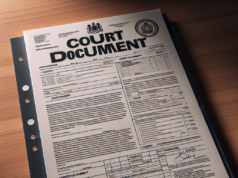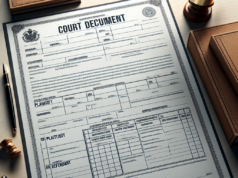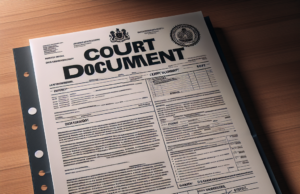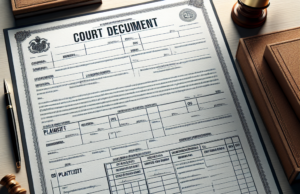
In a significant shift aimed at modernizing the judicial system, recent changes to court rules have been implemented, promising to reshape the landscape of legal proceedings. These revolutionary updates are designed to enhance efficiency, accessibility, and fairness in the courts, impacting litigants and legal practitioners alike. As stakeholders navigate this new terrain, understanding the implications of these changes is crucial for effective case management and compliance. This article delves into the key updates, their implications, and expert insights on what these changes mean for the future of legal practice.
Understanding the Recent Court Rule Changes: An Overview of Key Updates
The recent court rule changes encompass a broad spectrum of updates, including amendments to filing procedures, discovery processes, and timelines for case management. Notably, the introduction of electronic filing systems aims to streamline document submissions, reducing the reliance on paper and expediting access to case materials. Additionally, new guidelines for discovery are designed to promote transparency and cooperation between parties, emphasizing the importance of early disclosure of evidence. These changes reflect a growing recognition of the need for a more efficient judicial process that can adapt to the increasing complexity of legal disputes in the modern era.
Implications of the New Court Rules on Legal Proceedings and Case Management
The implications of these new court rules are profound, particularly concerning the management of legal proceedings. With the emphasis on electronic filing and streamlined discovery, courts are expected to experience a reduction in case backlogs, allowing for faster resolution of disputes. Furthermore, the updated timelines for case management encourage proactive engagement from all parties involved, fostering a culture of collaboration rather than adversarial confrontation. This shift not only enhances the efficiency of the judicial process but also aims to improve the overall experience for litigants, who may find themselves navigating a more user-friendly legal environment.
How the Revolutionary Changes Affect Litigants and Legal Practitioners Alike
For litigants, the new court rules promise greater accessibility and transparency in the legal process. The move towards electronic filing and online case management systems allows individuals to track their cases in real-time, reducing uncertainty and anxiety associated with traditional court processes. Legal practitioners, on the other hand, must adapt to these changes by updating their practices and investing in technology that aligns with the new requirements. This may involve additional training for staff and adjustments to case management strategies to ensure compliance with the updated rules. Ultimately, both litigants and legal professionals will need to embrace these changes to fully realize the benefits they offer.
Navigating the Transition: Essential Steps for Compliance with New Court Rules
To successfully navigate the transition to the new court rules, legal practitioners must take several essential steps. First, they should familiarize themselves with the specific changes and their implications for case management and filing procedures. This may involve attending training sessions or workshops offered by legal associations or court administrators. Additionally, practitioners should assess their current technology and systems to ensure they are equipped to handle electronic filings and online case management. Establishing clear communication channels with clients regarding the changes will also be crucial, as it helps manage expectations and fosters a collaborative approach to the new processes.
Expert Insights: Legal Professionals Weigh In on the Impact of Rule Changes
Legal professionals have expressed a range of opinions regarding the impact of the recent court rule changes. Many view the updates as a necessary evolution of the judicial system, aligning it with contemporary practices and technological advancements. Experts highlight the potential for increased efficiency and reduced costs associated with electronic filing and streamlined discovery processes. However, some practitioners caution that the transition may pose challenges, particularly for those who are less technologically savvy or who operate in jurisdictions with limited resources. Overall, the consensus among legal experts is that while the changes may require an adjustment period, they ultimately represent a positive step towards a more accessible and efficient legal system.
Future Outlook: Anticipating Further Developments in Court Procedures and Rules
Looking ahead, it is anticipated that the recent court rule changes will pave the way for further developments in court procedures and rules. As technology continues to evolve, courts may explore additional innovations, such as artificial intelligence for case management and predictive analytics to assess case outcomes. Moreover, ongoing feedback from legal practitioners and litigants will likely inform future adjustments to the rules, ensuring they remain relevant and effective in addressing the needs of the judicial system. As stakeholders adapt to these changes, the overarching goal will be to create a more equitable and efficient legal environment that serves the interests of all parties involved.
In conclusion, the recent revolutionary changes to court rules mark a significant milestone in the evolution of the judicial system. By enhancing efficiency, accessibility, and transparency, these updates promise to improve the experience for both litigants and legal practitioners. As the legal community navigates this transition, it is essential to remain informed and proactive in adapting to the new landscape. The future of court procedures and rules is poised for further innovation, and stakeholders must embrace these changes to foster a more effective and equitable legal system.




























